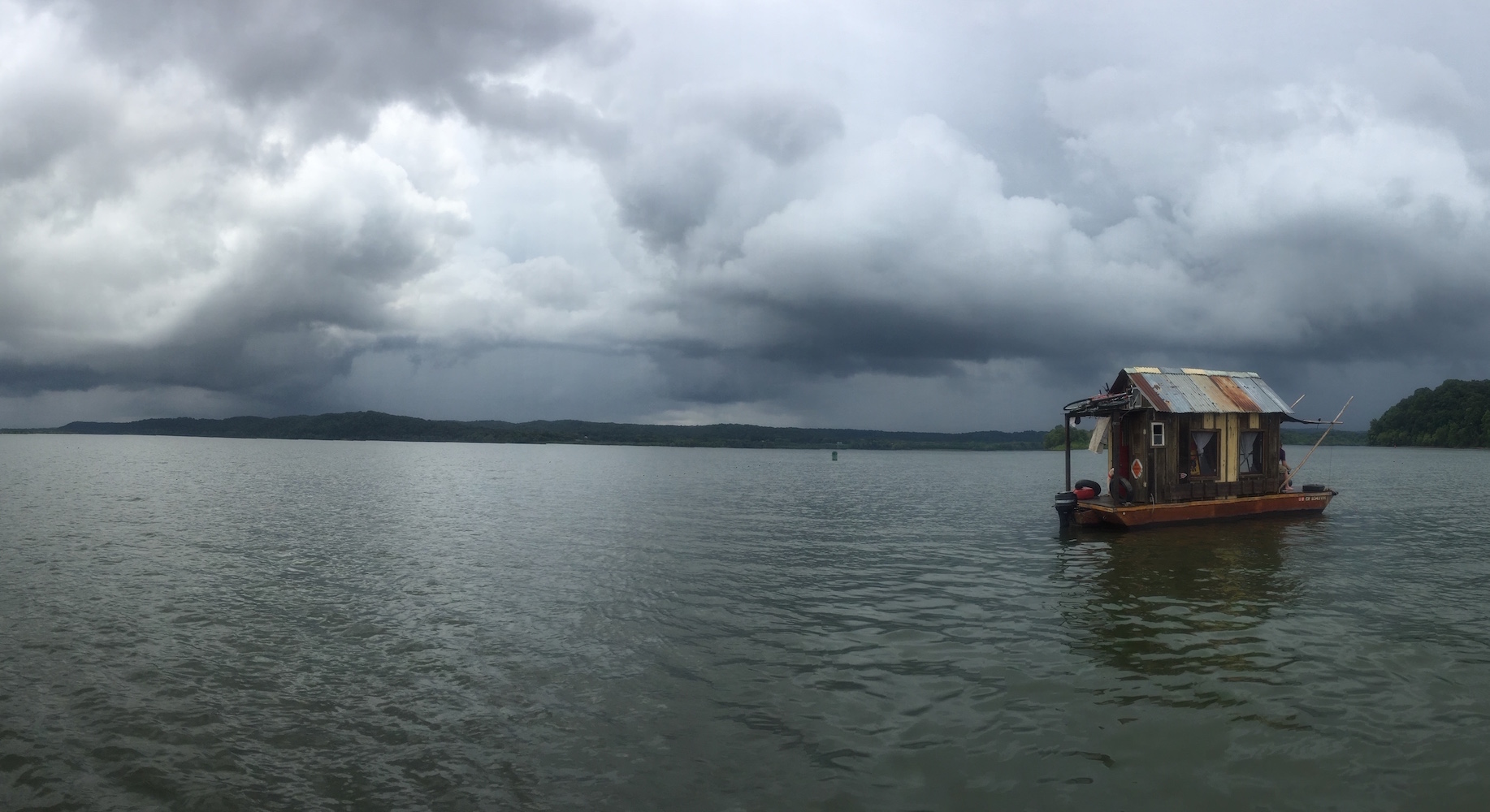A Secret History of American River People is an art project that explores how we live, what we hold onto, and what we’re at risk of losing. It’s about rivers and the people shaped by them, and how their stories ripple beyond the banks into the universal human experience.
At its core, this project asks: How do we live meaningful lives in the face of change? How do communities survive displacement, environmental collapse, and economic precarity? What do rivers carry besides water—memories, histories, resistance, resilience?
The project gathers personal stories from people who live and work along America’s rivers, uncovering voices often left out of dominant historical narratives. It examines how river communities respond to threats like economic displacement, environmental degradation, and the effects of global climate change, offering insights into both individual and collective resilience. This isn’t just a project about listening; it’s a project about what happens when we truly hear.

A Secret History: What It Is, What It Does
Since 2014, A Secret History of American River People has traversed over 2,400 miles of waterways on the Upper Mississippi, Tennessee, Sacramento, Hudson, and Ohio Rivers—and soon, the Atchafalaya Basin—gathering more than 160 oral histories from individuals whose lives are intertwined with the rivers they call home. The project unfolds on the water, in conversations, and through immersive exhibitions.
At the center of the project is a hand-built shantyboat, serving as both a sculptural centerpiece and a floating archive. Built over two years by the artists from reclaimed materials, the shantyboat echoes mid-century designs once common along American rivers. It functions not only as an expedition vessel but also as a space where visitors engage with archives, view excerpts of interviews, and participate in conversations that challenge dominant historical narratives.
Traveling by river allows us to meet people where they live and work, creating authentic connections and uncovering stories that might otherwise be overlooked. Through fieldwork, exhibitions, and public programming, A Secret History becomes a living space where personal narratives intersect with larger questions about history, environmental change, and the fragile systems we build to hold ourselves together. The project preserves endangered histories while connecting contemporary river communities through shared stories of resilience and adaptation.
Artistic Framework
A Secret History of American River People exists at the intersection of social practice, environmental art, and documentary aesthetics. It draws on traditions of participatory storytelling, site-specific installation, and oral history while embracing a multidisciplinary approach.
This project explores how rivers shape us and how we shape them in return. It is an examination of human experience, challenging the narratives we are taught to accept—about history, belonging, and the limits of what is possible.

The heart of the work is dialogic: the art isn’t just in the photographs, new media, videos, or installations—it’s in the conversations it sparks—on the road, on the river, at exhibitions, by word-of-mouth, and online. The project draws influence from artists like Suzanne Lacy, The Harrisons, and Mark Dion, who interrogate the intersections of environment, society, and art. It’s equally informed by the ethics of bottom-up documentarians and historians like Dorothea Lange, Alan Lomax, and Howard Zinn, whose work foregrounds the voices often left out of dominant historical narratives.
A Secret History is an evolving practice, carried forward by the voices that shape it—reshaping the present and challenging us to imagine futures we’ve been told are impossible. It raises critical questions woven into the project’s core:
- What have we been taught to forget?
- What does it mean to belong in contested spaces?
- Who gets to claim space, and who is pushed out?
- How do we preserve our quickly vanishing cultures?
- How do people carve out lives beyond ownership and control?
- How do we built what we need to survive in a changing world?
Follow our regular updates via email, RSS, Twitter, and Instagram.
About the Artist

Wes Modes is a California-based social practice artist, storyteller, and researcher whose work explores the hidden histories of people living at the margins. Their multidisciplinary practice spans oral history, participatory art, and immersive installation, with a focus on how personal narratives intersect with environmental, social, and historical forces.
Modes’ ongoing project, A Secret History of American River People, blends fieldwork, sculptural installation, and dialogic storytelling to examine how rivers shape communities and identities. Their work has been exhibited at institutions such as the Portland Museum (Louisville), White Box Gallery (New York), and the Waterfront Museum (Brooklyn), fostering dynamic public engagement and critical reflection.
In addition to their artistic practice, Modes teaches at the University of California, Santa Cruz, where they focus on the intersections of art, technology, and social engagement. Their work is grounded in the belief that art can be a catalyst for connection, dialogue, and transformation, challenging audiences to reconsider the narratives that shape our understanding of history, place, and belonging.
Partners & Support
A Secret History of American River People is a fiscally sponsored project of Intersection for the Arts, San Francisco’s oldest alternative arts space, presenting groundbreaking works in the literary, performing, visual and interdisciplinary arts.

